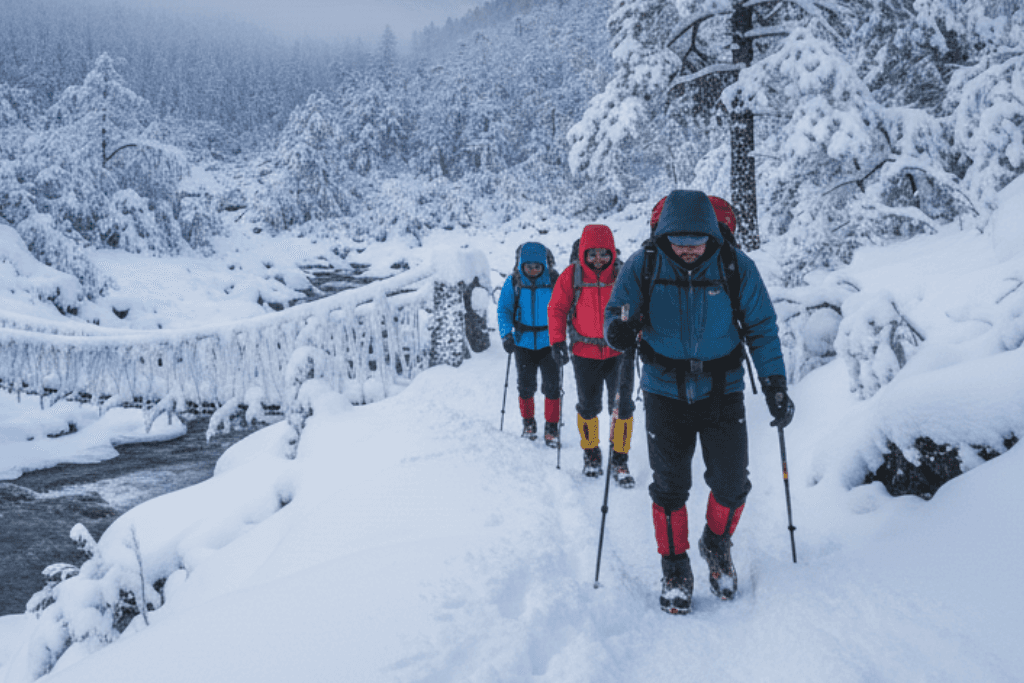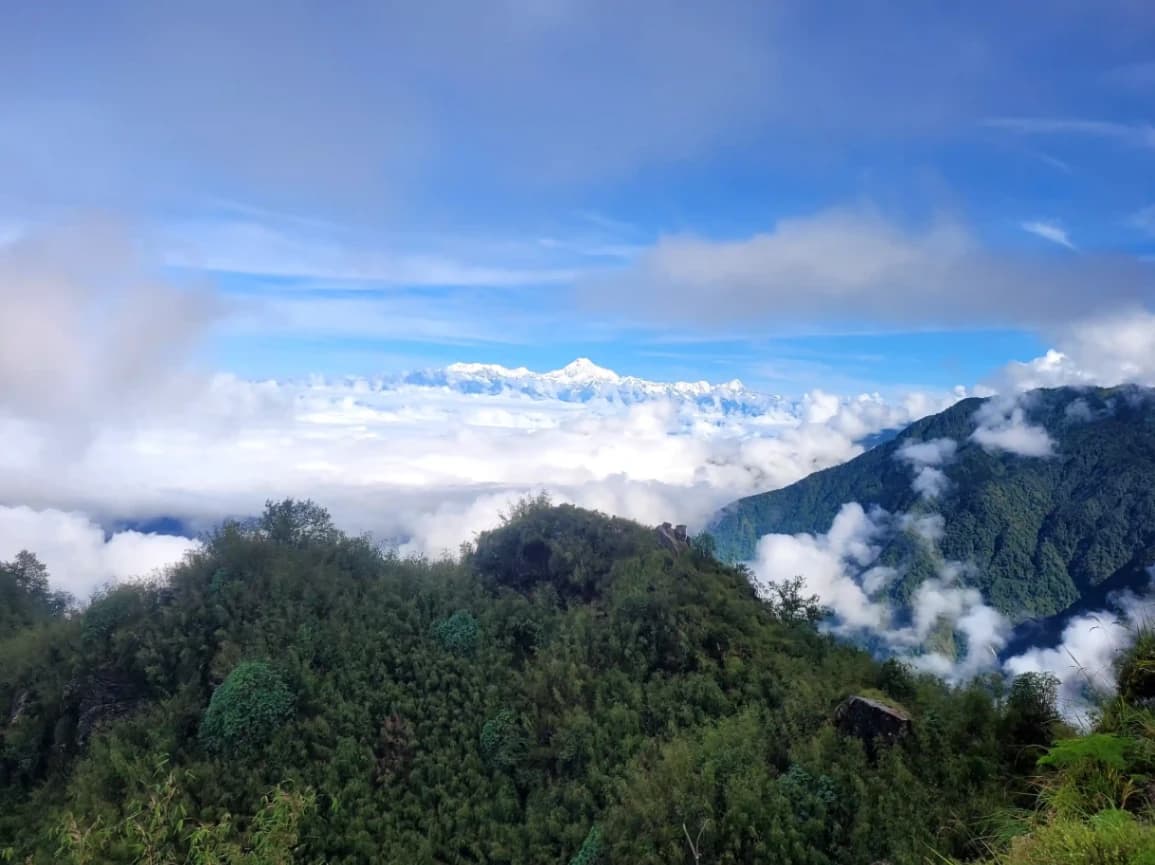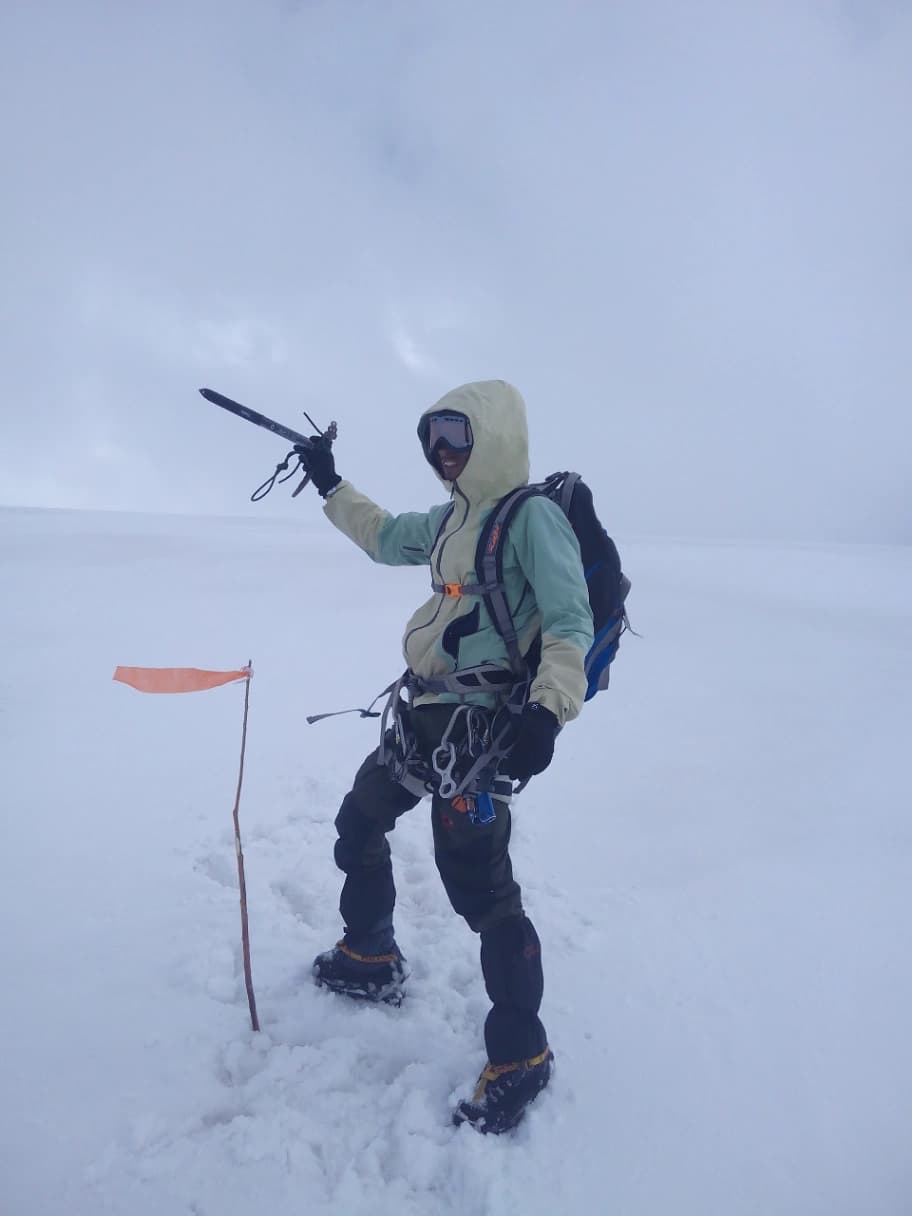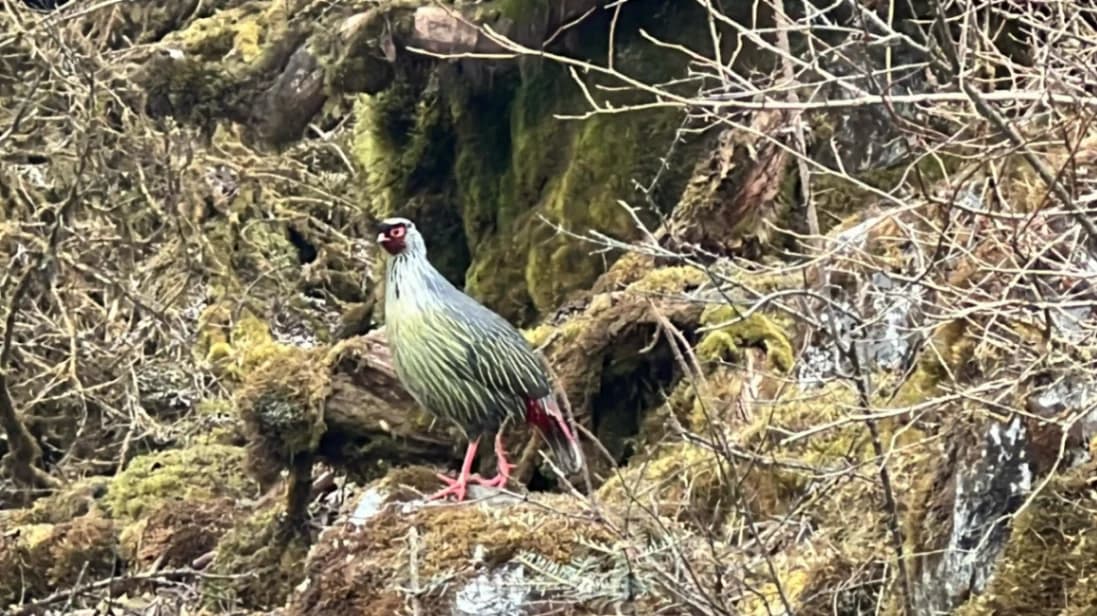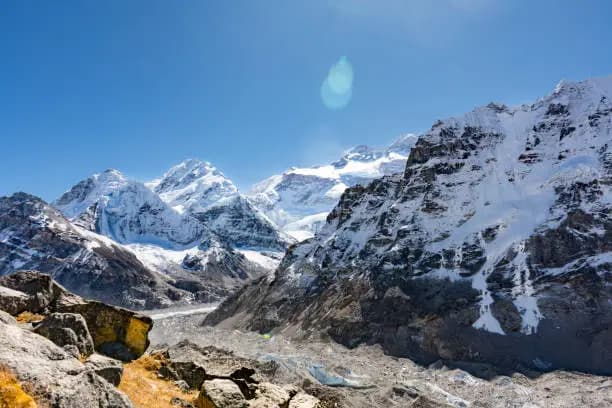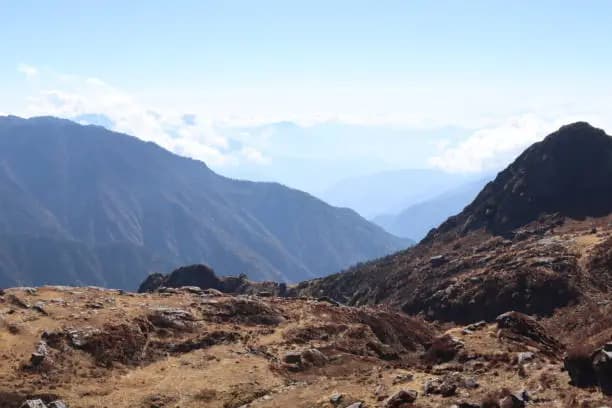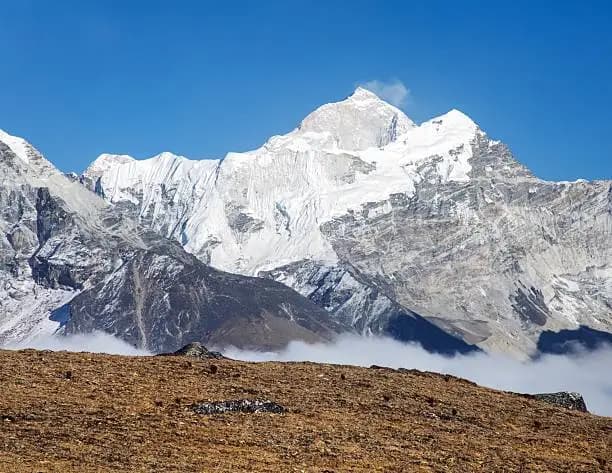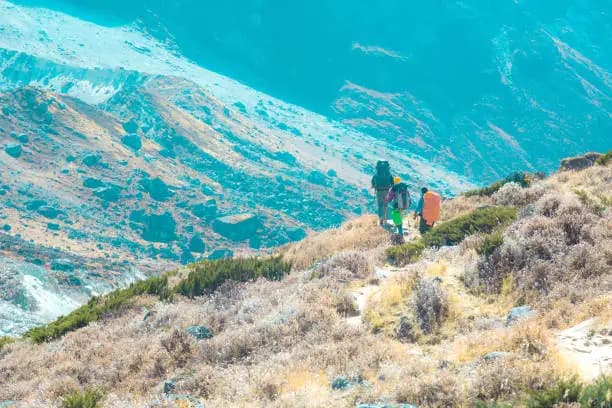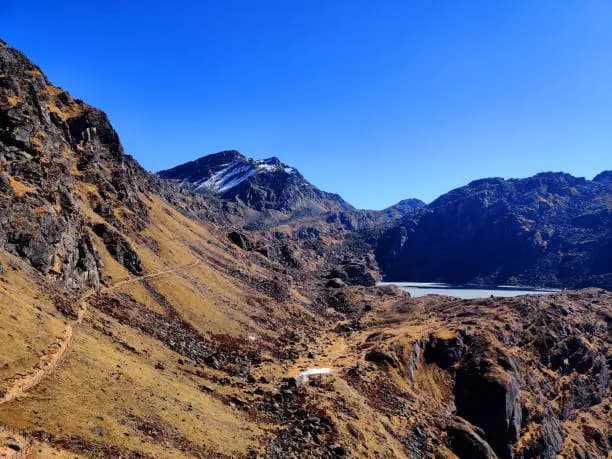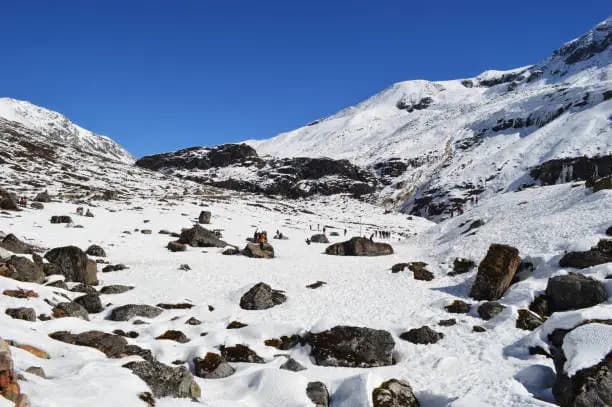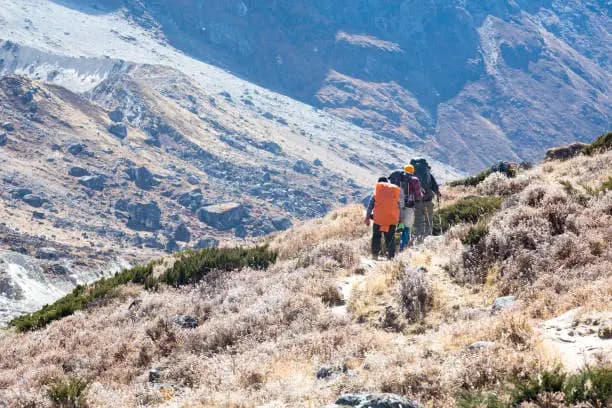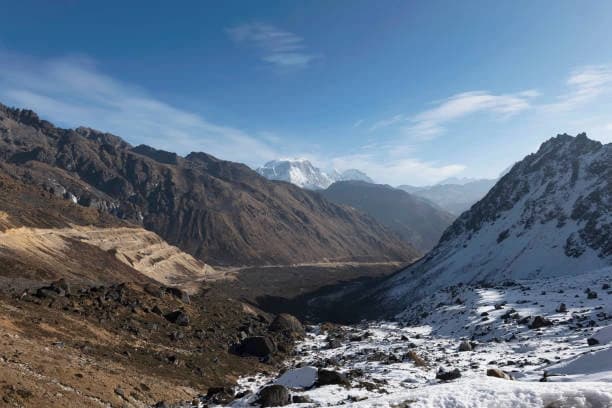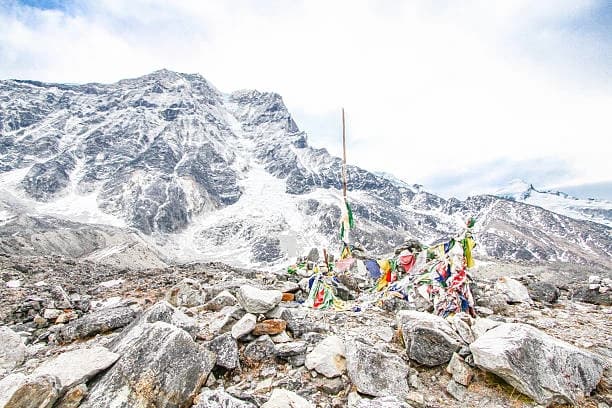Have you ever experienced a silence that is only due to snow? That’s what the Goechala Trek in Winter feels like. It’s calm, it’s cold, and honestly, it’s the kind of peace most of us crave when city life gets too loud.
If you’ve ever dreamed of walking through forests dusted with snow, hearing nothing but your boots crunching and the wind whistling through the trees – well, this trek is exactly that.
Why Do the Goechala Trek in Winter?
Let’s be honest – not everyone signs up for freezing mornings and icy paths. But that’s the charm of it. Goechala Trek in Winter is definitely not a comfortable one, but rather challenging and at the same time the beauty that comes with it.
Here is every shiver’s worth:
- Less crowd, more silence. The mountains, you, and possibly a few other adventurers like you are the only ones present.
- Snow everywhere. The forest trails turn white, bridges freeze halfway, and every morning feels like a postcard moment.
- Insane views of Kanchenjunga. Winter skies are crystal clear. When that first sunlight hits the peak, trust me, you’ll forget the cold.
- Real connection with locals. Since there are fewer trekkers, you actually get time to chat with locals – over hot chai, of course.
In fact, if you’re the kind of person who finds peace in solitude, you’ll love this trek even more in winter.
Weather During Goechala Trek in Winter
Let’s talk about the one thing everyone secretly worries about – the cold. Yeah, it’s cold. Like, really cold. But if you’re layered up properly, it’s totally manageable.
- The temperature during the day is usually at 0°C to 5°C, while the night can be at -10°C on higher camps like Thansing or Lamuney.
- Snowfall: Between December and February, expect snow almost every week. Some days it’s light and dreamy, some days it’s full whiteout.
- Visibility: Winter brings clearer skies. Those mountain views? Sharp, dramatic, and honestly, too good to look real.
By the way, the cold isn’t the enemy here – the real challenge is staying motivated to crawl out of that sleeping bag at 4 a.m.
The Challenges You’ll Face
Okay, so let’s not sugarcoat it. The Goechala Trek in Winter is beautiful, but it’s also demanding.
Here’s what makes it a bit tough (and also what makes it memorable):
- Frozen mornings: Your water bottle? Frozen solid. Even brushing teeth feels like a dare.
- Slippery trails: The paths near Bakhim and Phedang can be icy, so walk slow and steady.
- Very short daylight during this time: the sun sets early so you have to plan your trek accordingly.
- Cold hands, even colder nights: Keeping fingers warm is now a full-time job.
But here’s the truth – the more you struggle, the more you feel alive out there. The mountain rewards effort. Always.
The Magical Views
Now, let’s talk about the part that makes all the cold worth it.
When you’re doing the Goechala Trek in Winter, every single view feels like it’s been painted overnight. The rhododendron forests? Now completely white. The wooden bridges? Covered in frost. And the silence? You’ll hear your own breath echo back.
Then comes that moment – the Goechala View Point. The sun rises, and suddenly Kanchenjunga glows orange and gold. Everyone goes quiet, and not because of the cold. It’s just that kind of moment – one you can’t really describe, only feel.
Let’s be real, no camera can capture that. You just stand there thinking, “This is why I came.” Learn more!
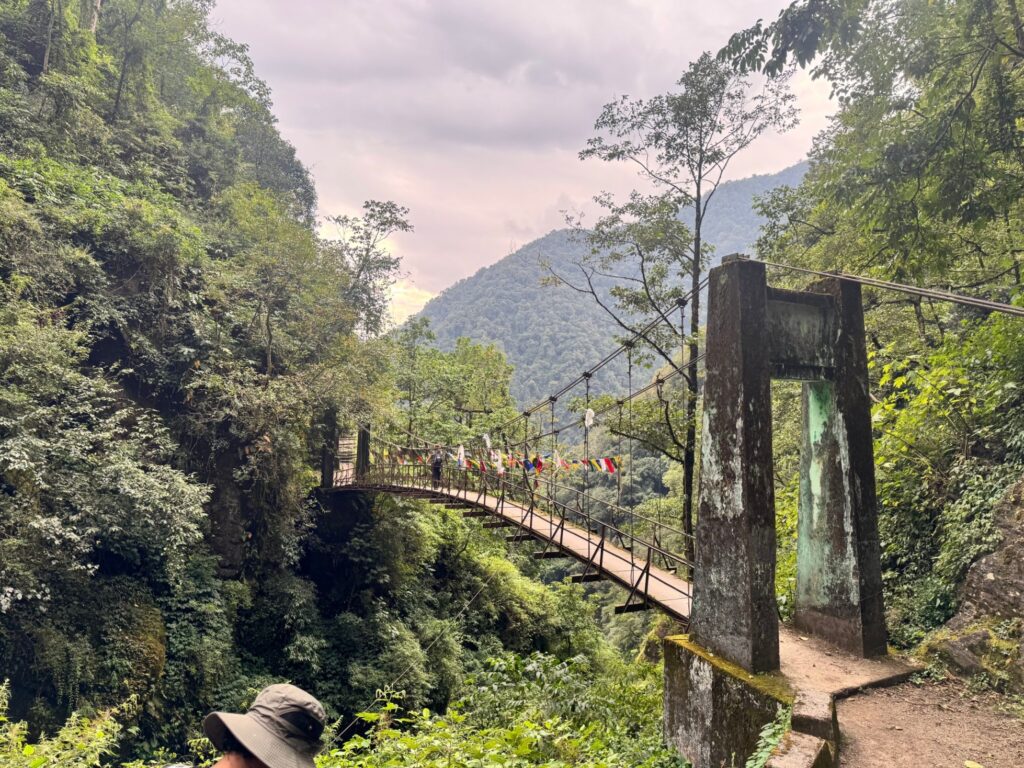
Preparation Tips for Goechala Trek in Winter
If you’re already thinking about doing it (and I think you should), here’s how to prepare smart:
- Layer up right. A thermal base, a fleece, and a down jacket – that’s your holy trio.
- Waterproof shoes matter. Snow seeps in fast, so invest in a solid pair.
- Get fit. Do a few weeks of walking or stair climbing. It makes a difference.
- Stay hydrated. It’s easy to forget water when it’s freezing, but dehydration hits hard in cold weather.
- Pack a thermos. Hot chai or soup mid-trek? That’s instant happiness.
By the way, don’t go overboard packing. You’ll regret it the moment you start that uphill climb.
Final Thoughts
The Goechala Trek in Winter isn’t everyone’s cup of tea. It’s cold, unpredictable, and sometimes just plain hard. But if you’re someone who likes raw, untouched nature – this trek is pure magic.
You’ll come back with frozen fingers, tired legs, and a heart full of peace. And honestly, that’s a fair trade.
So, if you’ve been waiting for a sign to do it – this is it. Go for it. The mountains are calling, and the snow’s waiting. Start your journey now!
FAQs About Goechala Trek in Winter
1. Is Goechala Trek open in winter?
Yes, it’s open. But you should always go with a guide or a group since the trails can get tricky.
2. How cold does it get during the trek?
Days are around 0 to 5°C, and nights can drop to -10°C or lower.
3. Is Goechala Trek winter safe?
If you come well-prepared and follow your trek leader’s directions, it is absolutely safe.
3. Is Goechala Trek winter safe?
If you come well-prepared and follow your trek leader’s directions, it is absolutely safe.
4. Which month is the best for Goechala Trek in Winter?
December and January are perfect – clear skies, thick snow, and minimal crowd.
5. Can beginners try this trek in winter?
Possible, yes. But start with smaller winter treks first to get used to the cold.
Follow us on Facebook to stay updated about recent best offers.


